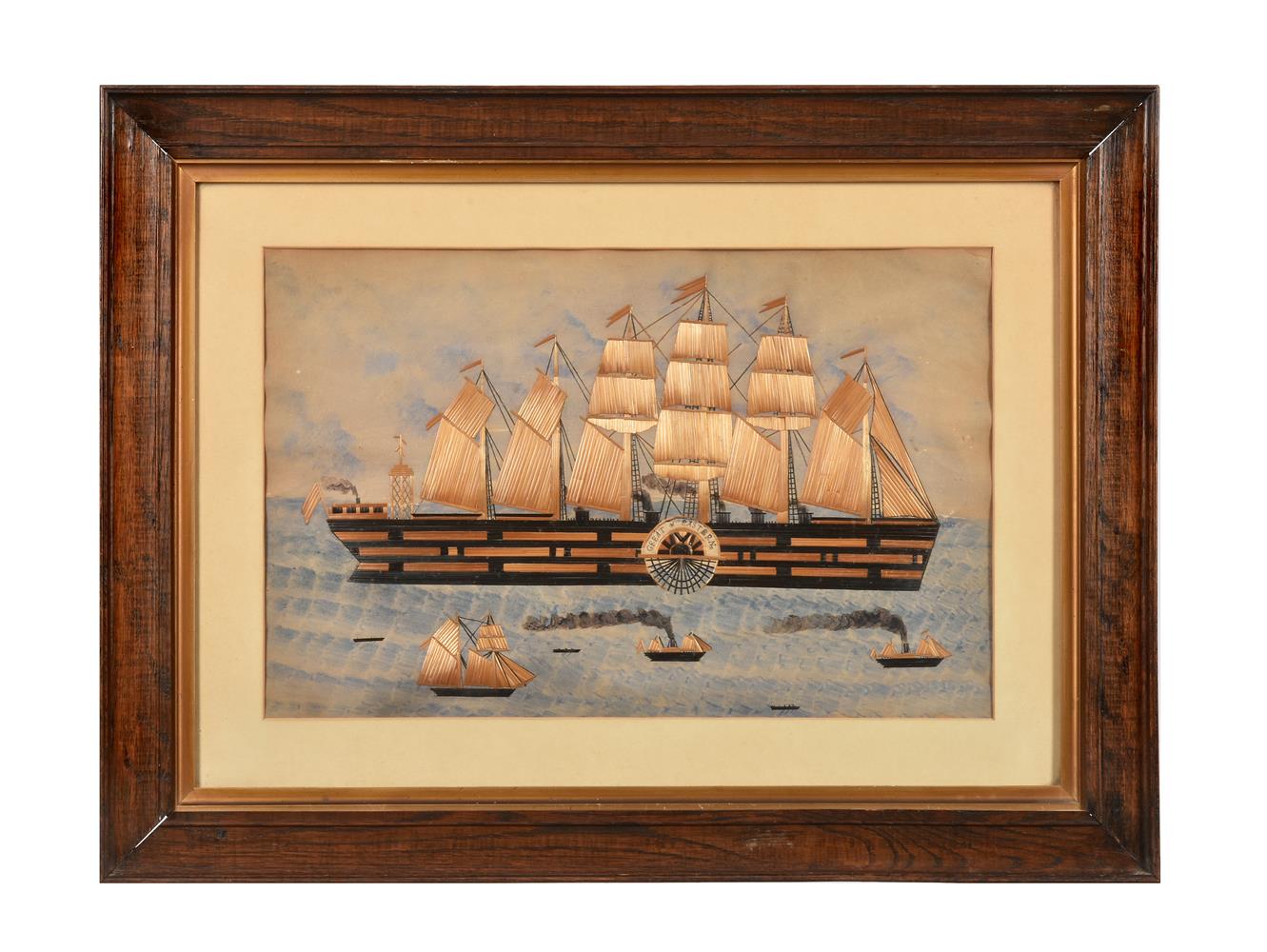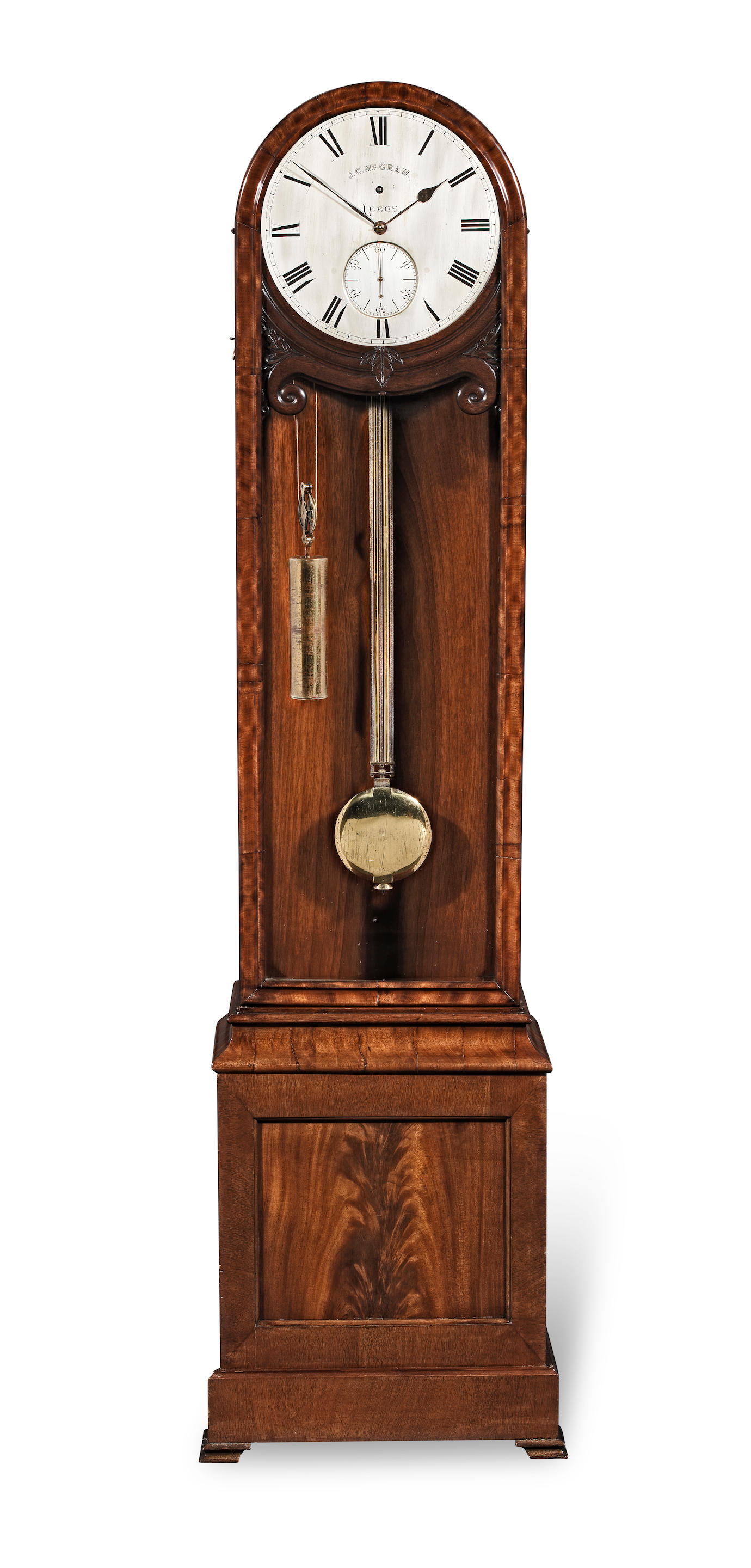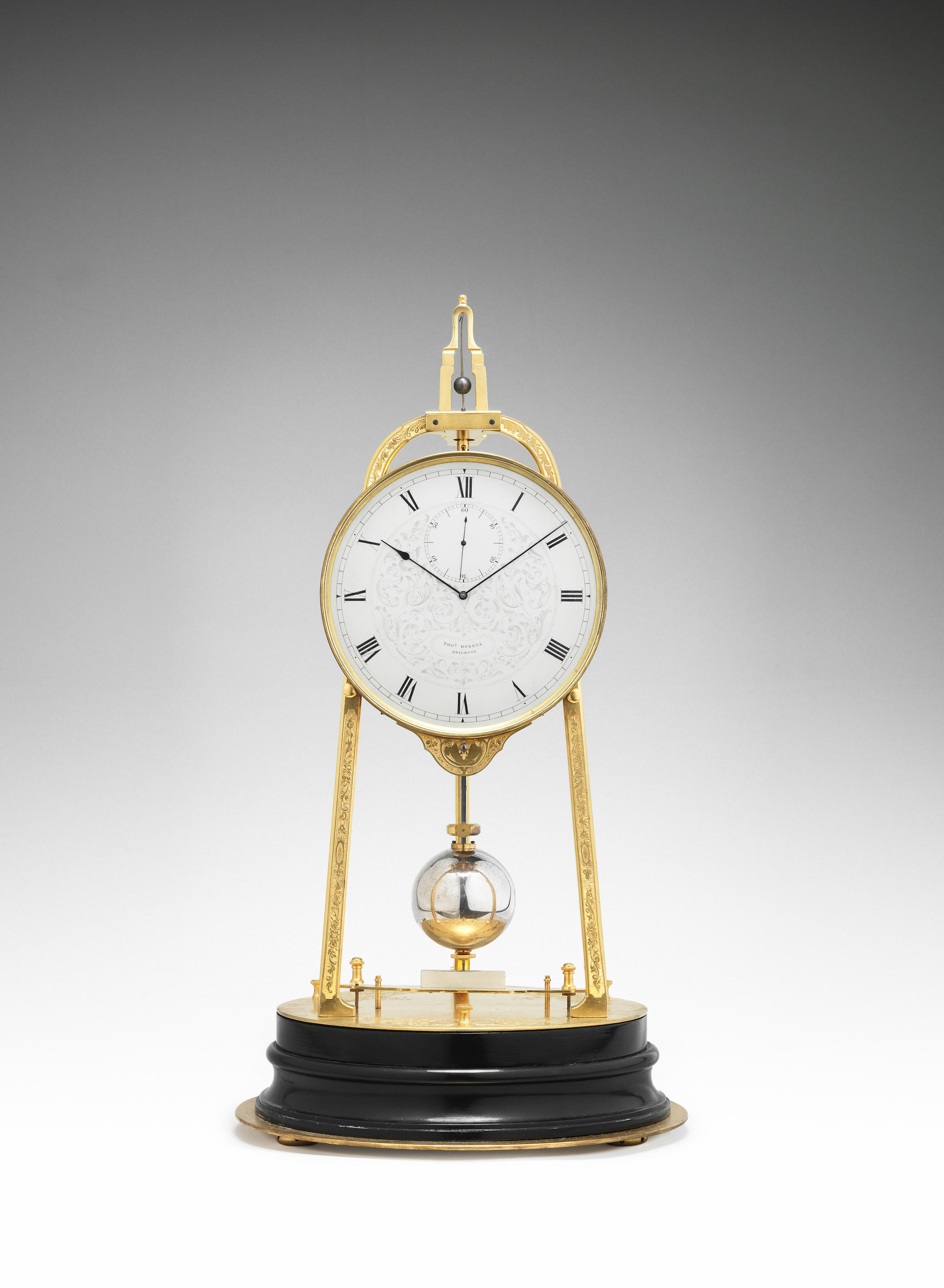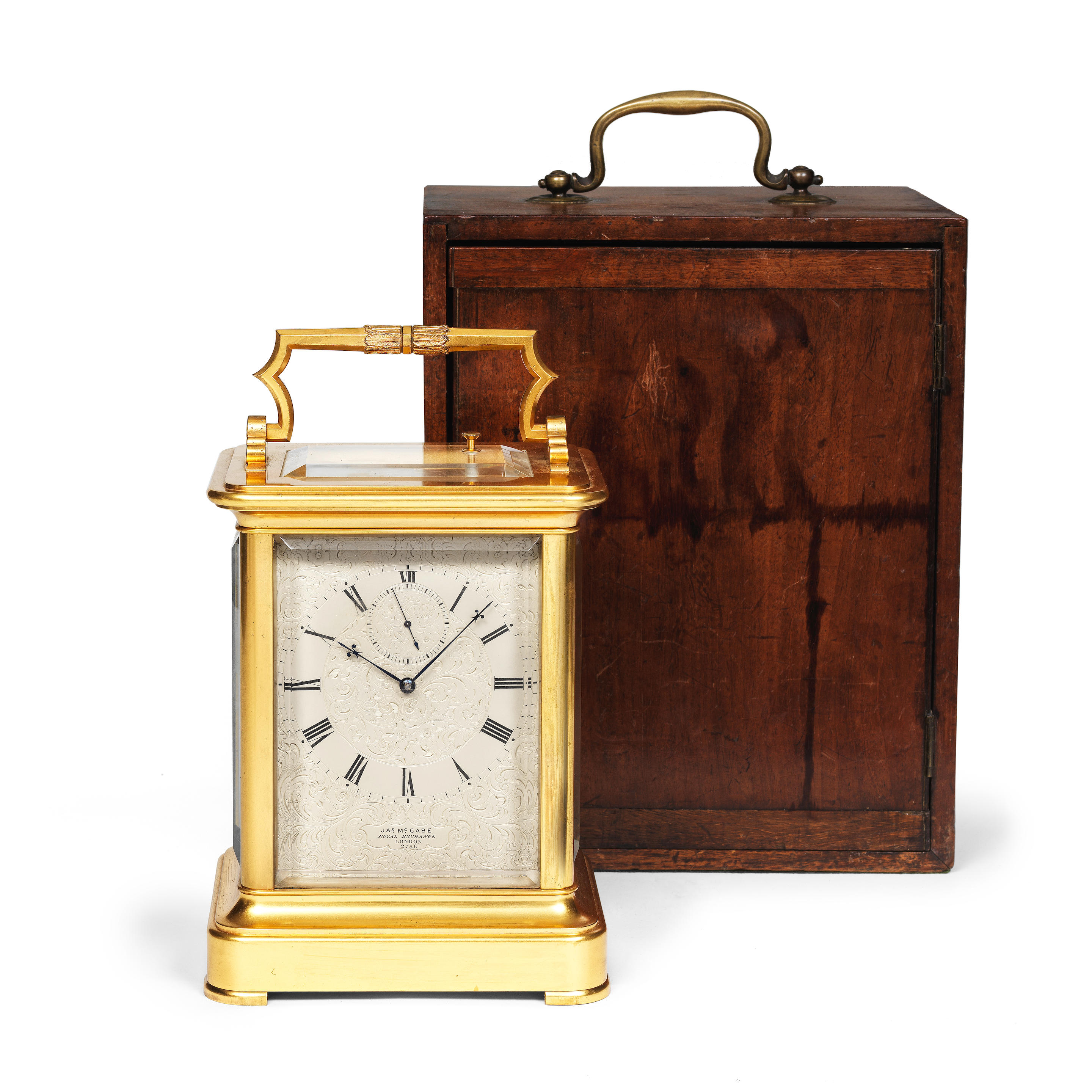A RARE MID 19TH CENTURY ENGLISH BRASS SKELETON CLOCK WITH VERTICAL MOVEMENT AND OF TWO WEEK DURATION BY JOHN PACE, BURY ST EDMUNDS the frame with chamfered plates formed as a circle on a pair of scrolling supports beneath a vertical spire, raised on an oval base signed in Gothic style script ‘John Pace Bury St Edmunds’ over a stepped, ebonised plinth, the pierced, skeletonised dial with Arabic numerals with a dotted minute border, the movement with a going barrel of two week duration, high count pinions and very delicate wheels of five and six crossings mounted in a straight line through the central spire, with deadbeat escapement, the pendulum regulated by a knurled screw at the apex of the frame, mounted on the rear of the frame are two pulleys linked by a cord to drive the hands, with pendulum, under a glass dome, 38cm high excluding dome, 43cm high including glass dome COMPARATIVE LITERATURE: D. Roberts, ‘British Skeleton Clocks’, Woodbridge, 1987, pp. 89-95, plate 14 for an identical model. AUCTION COMPARABLE: Bonhams, London, 17 June 2008 sold for £9000. A skeleton clock of one year duration was sold at Christie’s, London, 17 March 2011, . John Pace was renowned for his clocks of long duration and specialised in skeleton clocks. He exhibited a similar clock to the present lot at the Great Exhibition of 1851 which was described as: “Pyramidal skeleton timepiece, which goes three months. The dial is placed at the bottom of the clock to show the motion of the wheels; Graham’s dead beat escapement, and the hands moved by a simple mechanism.” At the same exhibition he also displayed an exceptional three year duration skeleton clock.
A RARE MID 19TH CENTURY ENGLISH BRASS SKELETON CLOCK WITH VERTICAL MOVEMENT AND OF TWO WEEK DURATION BY JOHN PACE, BURY ST EDMUNDS the frame with chamfered plates formed as a circle on a pair of scrolling supports beneath a vertical spire, raised on an oval base signed in Gothic style script ‘John Pace Bury St Edmunds’ over a stepped, ebonised plinth, the pierced, skeletonised dial with Arabic numerals with a dotted minute border, the movement with a going barrel of two week duration, high count pinions and very delicate wheels of five and six crossings mounted in a straight line through the central spire, with deadbeat escapement, the pendulum regulated by a knurled screw at the apex of the frame, mounted on the rear of the frame are two pulleys linked by a cord to drive the hands, with pendulum, under a glass dome, 38cm high excluding dome, 43cm high including glass dome COMPARATIVE LITERATURE: D. Roberts, ‘British Skeleton Clocks’, Woodbridge, 1987, pp. 89-95, plate 14 for an identical model. AUCTION COMPARABLE: Bonhams, London, 17 June 2008 sold for £9000. A skeleton clock of one year duration was sold at Christie’s, London, 17 March 2011, . John Pace was renowned for his clocks of long duration and specialised in skeleton clocks. He exhibited a similar clock to the present lot at the Great Exhibition of 1851 which was described as: “Pyramidal skeleton timepiece, which goes three months. The dial is placed at the bottom of the clock to show the motion of the wheels; Graham’s dead beat escapement, and the hands moved by a simple mechanism.” At the same exhibition he also displayed an exceptional three year duration skeleton clock.















Testen Sie LotSearch und seine Premium-Features 7 Tage - ohne Kosten!
Lassen Sie sich automatisch über neue Objekte in kommenden Auktionen benachrichtigen.
Suchauftrag anlegen